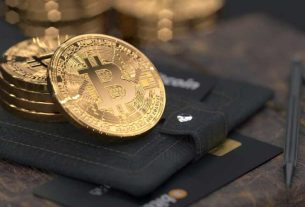Sat 06 January 2024:
Gold as an investment option may continue to dominate in 2024, attracting both central banks and individual investors. Central banks particularly made record purchases of gold in 2022 and 2023, especially after the Ukraine war broke out when Russia and China started accumulating gold as part of a hedging (de-dollarisation) strategy. Overall, there was a 100% increase in gold accumulation by the world’s central banks in 2022 and the trend continued in 2023. Central banks bought over 800 tonnes of gold in 2022, compared to just 450 tonnes in 2021, a near-100% increase. 2023 also saw well over 800 tonnes of gold being bought by central banks. The surge in gold buying since the Ukraine war is significant and it picked up even more after the Israeli assault on Gaza.
Geopolitical uncertainties have caused a big rush to buy gold, even as global economic weakness and persistent world inflation make the yellow metal ever so attractive in the medium term. Experts suggest that gold will remain a defensive investment preference in the near future. Gold has given 15% return in 2023 and its average annual return over the last five years has also been about 15% (in rupee terms). Perhaps no other asset class has given such returns globally.
So gold is being watched very eagerly by big investors, even as the IMF has cautioned that the world inflation rate is not going to come down to the comfort zone of central banks by 2025.
Generally, the attraction for gold increases when governments around the world become reckless borrowers, creating macroeconomic instability and the risk of persistent inflation. These conditions already existed before Covid but were hugely exacerbated thereafter as most governments, especially in the developed world, went on a massive borrowing spree to protect their citizens against a possible economic implosion. The unprecedented fiscal and monetary stimuluses are yet to be rolled back to reasonable levels. It is in such times that gold as an asset class is seen as a saviour.
The overall public debt accumulated by world governments stood at $97 trillion in 2023, which is 40% more than what it was in 2019. The US alone holds 33% of this cumulative world public debt. The US, Japan and many European economies have government debt to GDP ratios ranging from 123% to 260%. India’s debt to GDP ratio was 81% in 2022-23 and the IMF recently warned it could touch 100% by 2028.
The aggregate global debt, which includes borrowings by governments, households and the private sector, was $307 trillion in the first half of 2023. It has increased by $100 trillion over just the last decade. It shows the sheer pace of debt accumulation by governments, households and the private sector together. The aggregate of government, household and private sector debt stands at a whopping 336% of world GDP. The largest economies in the world today have the most serious debt problem. This is not good either for stable economic growth or for keeping inflation under control. There is also uncertainty over how long the US dollar will hold its own as a leading currency, if such conditions persist for long.
Against this backdrop it is no surprise that gold is being seen as a very attractive investment option for some time to come. War and geopolitical instability lend further weight to this sentiment.
M.K. Venu
This article was first published on The India Cable
______________________________________________________________
FOLLOW INDEPENDENT PRESS:
WhatsApp CHANNEL
https://whatsapp.com/channel/0029VaAtNxX8fewmiFmN7N22
![]()
TWITTER (CLICK HERE)
https://twitter.com/IpIndependent
FACEBOOK (CLICK HERE)
https://web.facebook.com/ipindependent
Think your friends would be interested? Share this story!






